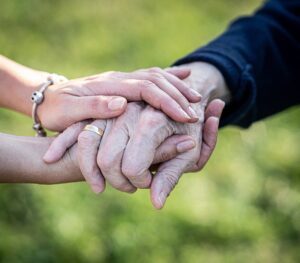
Nationally, elder abuse is a growing problem, one that experts believe is widely underreported. According to a recent study, one out of every 13 elders is the victim of abuse.
No one wants to see an elder they love suffer from abuse, but unfortunately, elder abuse occurs throughout the country. Despite all of the red flags, physicians and others responsible for providing care to older adults often miss the signs of abuse or misinterpret those signs. For many, the reason for this lapse is a lack of communication between elders and their caregivers, their family members, and the government officials who have the power to regulate and enforce eldercare standards.
If an elder that you love is living in a long-term care facility or currently has frequent in-home care, or you are just curious about the issue, contact an experienced Fort Myers nursing home negligence attorney. Read on for more information about elder abuse and why a lack of communication makes it difficult to identify.
Types of Elder Abuse
Before discussing why elder abuse is so difficult to identify, we should first look at the five types of elder abuse currently taking place in the United States:
- Physical abuse: Physical abuse is the intentional use of physical force to control or punish an elderly person. Physical abuse may include physically or chemically restraining the elder, as well as punching, slapping, pushing, or otherwise physically assaulting the older individual. Some signs of physical abuse in elders include unexplained injuries requiring emergency treatment; bruising on the elderly person, particularly on the wrists, which is a sign of physical restraint; delayed medical treatment of injuries; the exhibition of fear by the older person when left with a particular caregiver; and withdrawal from activities that the elder previously enjoyed.
- Emotional abuse: Emotional abuse in older adults involves using fear, threats, or intimidation to control the individual. Some examples of emotional abuse include barring access to resources, behaviors that aim to belittle the senior, humiliation, and isolation. Signs of elder abuse include depression, withdrawal, fear, a desire to harm others, mood swings, low self-esteem, avoidance of eye contact, isolation from family and friends, and changes in eating or sleeping patterns or social behavior.
- Sexual abuse: Elder sexual abuse is any type of unwanted sexual interaction. This may include groping, sexual penetration, forcing the elder to engage in a conversation of a sexual nature, or forcing the elder to view pornography. Some of the warning signs of sexual abuse include bleeding from the genitalia or anus, bruising on the genitals or breasts, new sexually transmitted diseases, torn or stained underwear, social or emotional withdrawal, or difficulty walking or sitting.
- Financial exploitation: Financial exploitation of an elder includes illegal or unauthorized use of the elder’s resources. Signs of financial exploitation include unexplained transactions on an elder’s bank account; a pattern of missing belongings; new names being added to the elder’s bank account signature card; an individual who takes an unusual interest in the elder’s finances; or evidence that the senior has not been paying his or her bills, such as eviction notices or utility cut-offs. Financial abuse of older Americans accounts for a loss of $2.6 billion each year.
- Neglect: Elder neglect involves failing to meet a senior’s basic needs, or failing to protect him or her from harm. Examples of neglect include failing to provide adequate food, water, or shelter; failing to provide appropriate medical care; and failing to protect the elder from danger, such as falling, elopement, or overdose. Neglect is one of the most common forms of elder abuse and presents with clear warning signs, such as soiled or dirty clothing, living in unsanitary conditions, abandonment of the elder, the appearance of having had too much medication or not enough, and unexplained weight loss or dehydration.
Expect More, Receive More: Legal Support That Feels Like Family
The Risk Factors Associated With Abuse
Elder abuse doesn’t care about wealth or overall health. It can happen to any older adult, within any financial bracket.
However, some conditions place an individual at higher risk for elder abuse than others, such as:
- Poor physical or mental health, which can leave the older adult more vulnerable to abuse and less able to report it. Those suffering from poor health or disabilities are more likely to face abuse in institutional settings. Up to 55 percent of elder adults with dementia have been abused by a caregiver, with the most common form of abuse committed against individuals with dementia being emotional abuse.
- A caregiver with substance abuse issues, which not only places the elder at risk for financial abuse, but also impairs the caregiver’s ability to control his or her own emotions, placing the elder at risk of other types of abuse.
- Poor family relationships that can result in an elder being entrusted to the care of a family member with which he or she has had a negative history.
- Social isolation of both the elder and the caregiver, which can result in a lack of resources to help ease the burden of providing care.
- Socio-cultural factors, such as a societal view that elders are weak or dependent, lack of money to hire a trained professional to care for the elder, and the migration of children to other locations, leaving the elder alone.
- Institutions, such as nursing facilities that are understaffed and where the staff is inadequately trained in how to meet the needs of the elder population.
- Living with a large number of household members besides the spouse. In particular, this factor is associated with an increased risk for financial exploitation by one or more of the household members.
Who Are the Abusers?
If the victims of elder abuse are most commonly individuals aged 65 and older, then who are the abusers? The National Center on Elder Abuse notes that most often the perpetrators are family members of the victim, such as adult children or spouses, followed by friends and neighbors, followed by home care aides.
According to In Law We Trust, in the state of Florida, nursing home abuse is defined as any willful act by a caregiver that causes or is likely to cause significant impairment to a vulnerable adult’s physical, mental, or emotional health.
Statistically, perpetrators are:
- More often male than female
- More likely to have experienced substance abuse, physical issues, or mental health issues
- More likely to socially isolated themselves
- More likely to have had a negative history with police and other authority figures
- More likely to be unemployed, experiencing financial problems, or under major stress
Why Elders Don’t Talk About It
When it comes to identifying and reporting abuse, one might think that the onus is on the elderly person to tell someone if he or she is experiencing abuse.
However, abused elderly individuals often will not—or cannot—discuss the problem with the police, social services, caregiver, or other trusted individuals, because of:
- An inability to communicate effectively due to physical or cognitive declines
- Dependence on the abuser to ensure that the elderly individual receives basic care and fear that talking about the abuse will leave the elderly individual without care.
- Fear on the part of the elderly individual of retaliation for talking about the mistreatment, including further abuse
- Fear on the part of the elderly individual that he or she will be placed in an institution for talking about the mistreatment
- Fear on the part of the elderly individual that talking about the abuse will get the abuser into trouble. This is especially common when the abuser is an adult child, grandchild, or spouse.
- No one to share the information with. Individuals residing in long-term care facilities may have no family or friends with which to share the abuse.
- Shame or self-blame about the abuse that has occurred
- Lack of understanding as to how to report abuse
Why Those Providing Care Often Miss the Signs
In most states, physicians or other professionals who suspect elder abuse are required by law to report their suspicions to the proper authorities. However, many of these professionals fail to notice the signs of abuse and thus fail to report.
According to information provided by American Family Physician, physicians fail to report elder abuse for additional reasons, including:
- A fear of harming the physician’s relationship with a hospital or nursing facility
- Lack of training in how to identify mistreatment and the proper reporting procedure
- Reluctance to classify the abuse as mistreatment or blaming the signs on the individual’s age-related cognitive or health decline
- Subtle signs, such as poor hydration, which often go unmissed during routine examinations
- The decision to honor a patient’s request not to report the mistreatment
- Reluctance to report abuse based only on suspicion
- Fear of having a confrontation with the offender
- The victim is isolated, and the physician has little contact with him or her.
Why Do Others Fail to Report Abuse?
Aside from physicians and others caring for the elderly, other trusted people in the elder’s life may also fail to report abuse. Many times, the reason that these other individuals fail to report abuse is that they do not understand the signs.
Other reasons include:
- Not knowing the procedure for reporting abuse
- Fear of the criminal justice system or the offender
- Trusting the word of the abuser, even if the evidence suggests otherwise
- Failing, as a caregiver, to ask for assistance with caregiving responsibilities or failing to recognize personal limitations
- Feeling as though not enough information was provided to definitively say that abuse has occurred and not wanting to wrongly accuse someone
- Feeling that it’s better to mind one’s own business and not engage in the personal conflicts of others
A Data Problem
The number of older, vulnerable adults is increasing. By 2050, the U.S. population of individuals aged 65 and older is expected to nearly double from the number that existed in 2012: from 43.1 million to 83.7 million. This makes the research into elder abuse and the ways to prevent it more important than ever. However, researchers have difficulty finding accurate data on the prevalence of abuse and its impacts on the abused, as well as on society.
The reasons for this data problem include:
- Varying definitions of what constitutes elder abuse. Without a uniform definition of what elder abuse is and who it impacts, many cases will continue to go unreported.
- Ethical dilemmas in the collection of information that may reveal personal details about abuse victims, including financial details and other confidential information
- The requirement of research review by institutional boards who may not have a broad understanding of elder abuse
- Lack of federal regulations to govern the research of elder persons, institutional facilities, and possible solutions
- A wide variation in the standards and methods used by researchers and agencies when gathering data on elder abuse
- Failure to accurately and consistently translate the information that has been collected to produce a viable authority on the subject or to develop prevention actions
- Failure to identify what constitutes a successful outcome when researching elder abuse
- Lack of researchers to collect and analyze all of the data
All of these factors produce conflicting studies not only on the prevalence of elder abuse, but also regarding which type of abuse is most commonly experienced by the elderly population.
Is Elder Abuse Preventable?
Research indicates that the following may help reduce the prevalence of elder abuse:
- Social support that includes connecting the elder to support resources that will reduce the level of social isolation and increase the amount of people available to detect and report suspected abuse. Social support also assists caregivers who may be stressed and struggling to cope with the responsibility of providing care.
- Education that will help professionals and loved ones understand the warning signs of elder abuse and the procedure for and necessity of reporting abuse.
If you or your loved one are a victim of elder abuse, contact an experienced attorney who can help you to understand your legal options.






